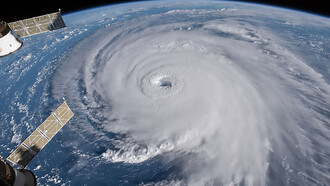Beyond the health applications discussed in the previous segment, the discovery of fourth phase water has led to a number of practical applications. They include the following: flow production (described in the first presentation); filterless filtration; and electrical energy harvesting. Here, I briefly introduce the latter two applications.
Filtration occurs naturally in EZ systems because the liquid-crystalline EZ phase profoundly excludes particles and solutes in much the same way as does ice. Accordingly, fourth-phase water is essentially solute free. Collecting it should provide water that is not only solute free, but also virus free, and bacteria free.
A working prototype has confirmed these expectations. Purification by this method requires no physical filter (thus “filterless”): the presence of the fourth phase itself accounts for the separation, and the energy for creating the fourth phase, mainly infrared energy, comes abundantly from the sun and the environment.
Implementation works as follows. Contaminant-containing water enters from the left (see figure). As representative contaminants we often use microspheres, suspended in the water. As the contaminant-containing suspension passes through the Nafion tube (or tubes made of other hydrophilic materials), exclusion zones are established just inside the tubes. Those exclusion zones push the microspheres toward the tube’s midline, leaving an annular EZ that is contaminant free.
A specially designed extractor (right) collects both the peripheral water and the core water. The former, EZ water, should be largely contaminant free, while the latter contains concentrated contaminants. In a single pass, we have been able to achieve separations as high as 200 to 1. And we have succeeded to engineer multiple parallel channels to achieve substantially increased throughput.
 Filterless filter, designed to isolate contaminants (here represented by microsphere particles).
Filterless filter, designed to isolate contaminants (here represented by microsphere particles).
A feature of note is that the contaminant-free water is of the EZ (fourth phase) variety. As described in the previous segment, EZ water promotes health. Hence, the water obtained by this mechanism should be not only free of contaminants, but also beneficial for health.
Particularly exciting is the prospect of using this same principle to separate salt from water. Preliminary observations imply that this is possible, the salt representing a kind of “contaminant.” Should this process turn out to be practical, ocean water could become a virtually unlimited source of excellent drinking water. At present, obtaining drinking water from the ocean is possible through reverse osmosis, but the energy cost of that process makes it practical only in regions where fossil fuels are abundant and where the burning of those fuels are of little environmental concern. In the present application, the burning of fuels is unnecessary; the required energy comes from the sun.
A second and entirely different application is energy harvesting: using sunlight and water to obtain electricity. Light builds EZ water. In so doing, it separates charge. As discussed in the first segment, the EZ is commonly negatively charged, while the region beyond contains positive charges in the form of protons or hydronium ions. The separated positive and negative charges constitute a battery.
Harvesting electrical energy should be realizable with electrodes placed in oppositely charged zones. Standard metal electrodes, we found, are unable to transduce a whole lot of current, whereas microelectrodes of the type used to measure intracellular potentials work well. We could obtain currents sufficient to light an LED. Hence, practical demonstration of this principle has been obtained.
With proof-of-principle established, it should be possible to develop this technology for practical use. Imagine! Obtaining electrical energy from water and sunlight. Scale-up to practical implementation remains for the future, but good reason exists to think that in the not-too-distant future, this technology could have the potential to replace standard photovoltaic systems with simpler ones based on water. It could be possible to obtain practically unlimited electrical energy from water and sunlight.
More detail on these practical applications can be found in the Pollack laboratory homepage. And I will discuss more details on energy-harvesting technology in the next segment.
Although the laboratory’s main focus centers on fundamental science, these practical applications are exciting. Not only do they open possibilities to solve lingering world issues, but also they lend credence to the underlying fundamentals that we have discovered.















